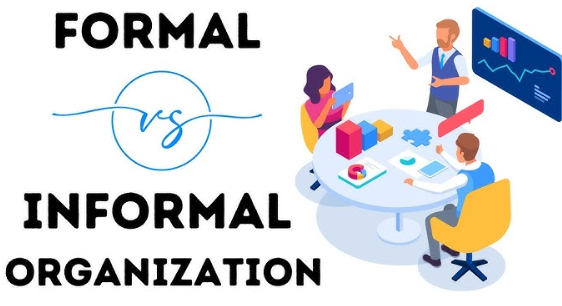Understanding Transgender and Transsexual
Although people often use the words “transgender” and “transsexual” interchangeably, these terms have different meanings. Transgender refers to people whose gender identity does not align with the sex they were assigned at birth. This is a broad umbrella term that includes many identities, such as genderqueer, genderfluid, non-binary, and male and female. Some transgender people may choose to undergo medical treatments like hormone therapy or surgery to confirm their gender, but this is not always the case.
The Distinction of Transsexual
The term “transsexual” is more specific. It refers to people who have undergone or wish to undergo medical procedures to match their gender identity with their physical characteristics. This may include hormone replacement therapy (HRT) and gender-affirming surgeries, such as breast augmentation or genital reconstruction, to induce secondary sexual traits of the chosen gender. Transsexual people who experience gender dysphoria—a painful disconnect between their sex assigned at birth and their gender identity—often seek medical treatments to help cope with this experience.
Clarification of Terms
There is often confusion between the terms “transgender” and “transsexual.” Under the umbrella term “transgender,” individuals are defined as those whose gender identity or expression differs from the sex they were assigned at birth. This includes people who identify as non-binary, agender, genderfluid, female, male, and more. People who change their gender identity are called transsexuals, which is a more precise term. Transsexual people may align their bodies with their gender identity through hormone replacement treatment or gender-affirming surgery.
Table of Differences between Transgender and Transsexual
| Characteristic | Transgender | Transsexual |
|---|---|---|
| Definition | Refers to individuals whose gender identity differs from the sex they were assigned at birth | Refers to individuals who have undergone or desire to undergo medical procedures to transition to the another sex |
| Identity | Based on internal sense of gender | May involve physical changes to align with gender identity |
| Transition | May or may not involve physical transition | Typically involves medical transition procedures such as hormone therapy or surgery |
| Scope | Can encompass a wide range of gender identities beyond male and female | Often associated with transitioning between male and female |
| Community | Part of the broader LGBTQ+ community | May or may not identify with the LGBTQ+ community |
| Legal Recognition | May seek legal recognition of gender identity through documentation changes | May pursue legal recognition of gender through official documents after physical transition |
| Discrimination | May face discrimination based on gender identity | May face discrimination based on gender identity and medical status |
| Language | Preferred term by many in the community | Term less commonly used in contemporary discussions |
| Medical Considerations | May seek medical interventions such as hormone therapy | More likely to undergo medical interventions such as hormone therapy and surgery |
| Personal Experience | Identity may be fluid and can evolve over time | May involve a more definitive sense of needing to align body with gender identity |
Diversity in Transition
While transsexual people typically undergo a surgical transition, transgender people may not always want to do so. Some transgender individuals choose to undergo a social transition instead. This could involve changing their name, pronouns, clothing, and hairstyle. For some transgender people, these changes are sufficient to align their identities with their bodies.
Challenges Faced
Transgender people often face prejudice and discrimination due to cultural norms and preconceptions about gender and gender presentation. Transsexual people also face challenges, particularly in accessing gender-affirming surgery and medical care. These procedures are often not covered by insurance, which makes them difficult to acquire.

Understanding Transgender
Transgender people are those who believe their gender does not align with the sex they were assigned at birth. This umbrella term includes a variety of gender identities, such as male, female, non-binary, genderqueer, and gender-fluid. Transgender people may choose to undergo medical treatments like hormone replacement therapy or gender-affirming surgery to match their physical characteristics with their gender identity.
It is important to understand that being transgender is neither a choice nor a mental illness. People choose to live authentically as their true gender by transitioning socially, medically, or both. Being transgender is an intrinsic part of who they are.
Understanding Transsexual
Transsexual people are those who have undergone medical procedures, such as hormone treatment or gender-affirming surgery, to align their physical traits with their gender identity. Transsexual is a more specific term within the broader category of transgender.
Gender dysphoria, the mismatch between one’s assigned sex and gender identity, is common among transsexual people. Medical treatments such as hormone replacement therapy or gender-affirming surgeries can help individuals experience less gender dysphoria and a greater sense of alignment between their bodies and gender expression.
Legal and Social Considerations
Transgender and transsexual individuals face unique legal and social challenges. These challenges may include discrimination, ignorance, and limited access to healthcare. However, these issues vary depending on personal circumstances, cultural norms, and geographic location.
Many nations and regions have made progress in recognising and defending the rights of transgender and transsexual individuals. Legal protections against discrimination in housing, healthcare, employment, and education are now in place in many areas. However, more work remains to achieve full equality and acceptance.
Conclusion
In conclusion, “transgender” and “transsexual” describe two distinct categories of individuals whose gender identity or expression differs from the sex they were assigned at birth. While transsexual people often undergo medical transitions, transgender people may or may not choose to do so. Transgender people are more likely to experience prejudice and discrimination, while transsexual people may face difficulties accessing healthcare and gender-affirming surgery.
Despite their similarities, the terms “transgender” and “transsexual” have distinct meanings. Transsexual is a more specific term for individuals who have undergone or plan to undergo medical procedures to align their physical traits with their gender identity. Transgender is a broader term that encompasses a wide range of gender identities.

Understanding these differences is crucial in fostering tolerance, inclusion, and support for individuals whose gender identity differs from the sex they were assigned at birth. By educating ourselves and others, we can contribute to creating a more inclusive and welcoming society.



